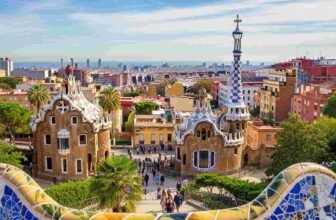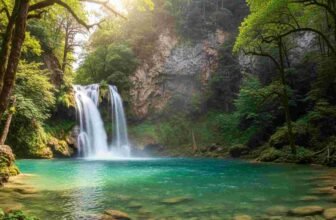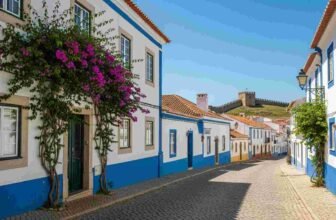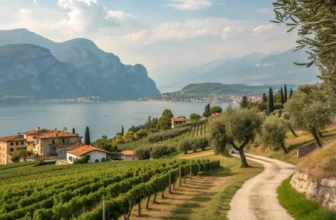
There’s something truly magical about living on water—where every sunrise feels like a fresh start, and the rhythm of the waves becomes your heartbeat. In a world where we’re often tethered to land, these floating communities have perfected the art of living free, adapting to water’s ever-changing embrace.
From tranquil lakes to bustling rivers, these villages aren’t just places—they’re a testament to human resilience and the quiet beauty of nature. Each one tells a story, inviting you to step into a life that’s as fluid as the waters they call home. Ready to explore what it’s like to live afloat? Let’s dive in.
1. Tonle Sap Lake, Cambodia
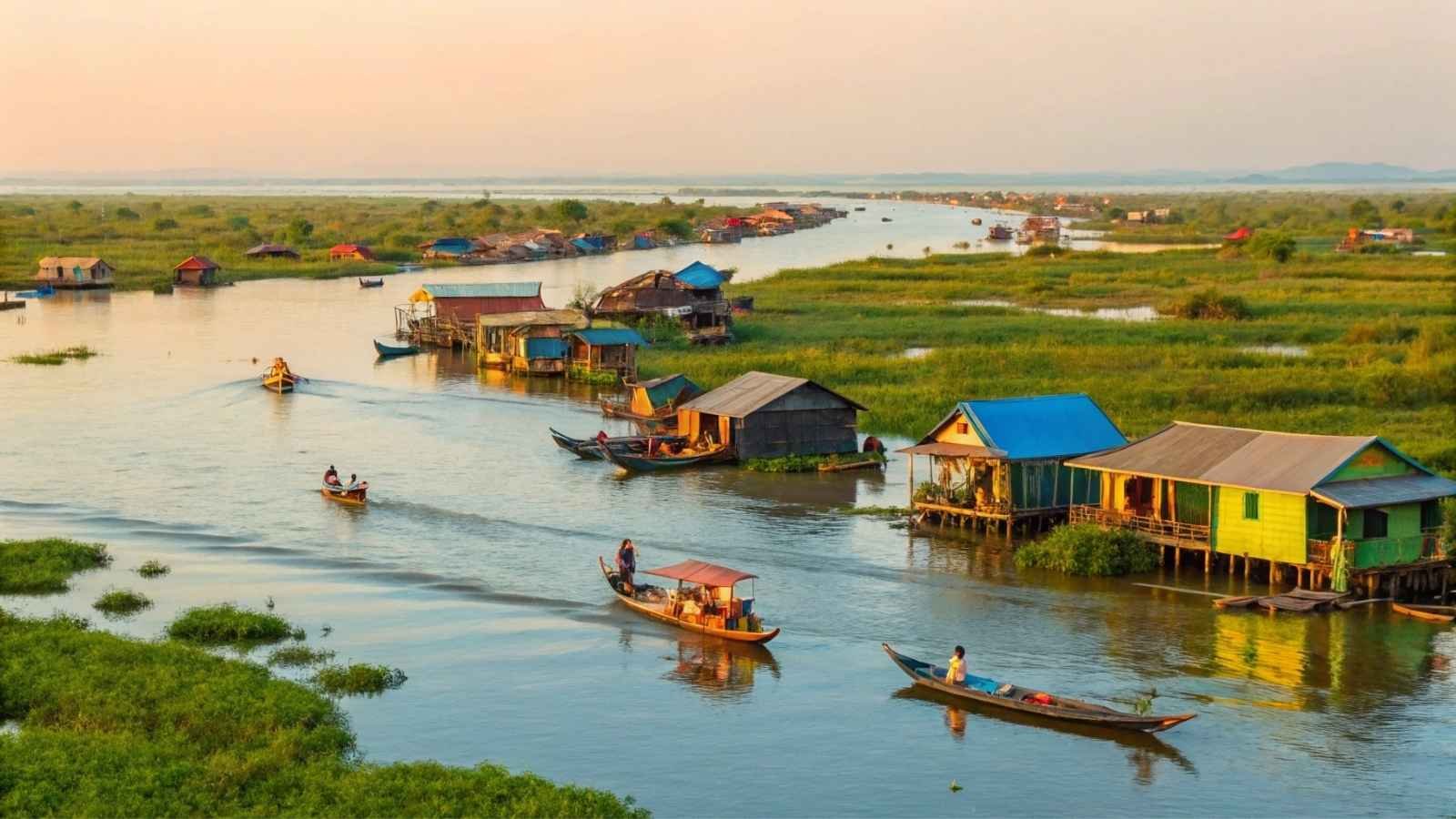
Tonle Sap isn’t just a lake—it’s a living, breathing organism that shifts in size with the seasons. During the monsoon, it expands up to five times its dry-season size, swallowing forests and fields, and transforming entire ecosystems. And in the middle of all that, you’ll find Chong Khneas and Kampong Phluk, the two most famous floating villages. Homes, schools, markets, and even temples float on bamboo rafts or are perched on towering stilts, all adapting to the pulse of the water.
What makes Tonle Sap special isn’t just the geography, it’s the human spirit. I remember sitting in a tiny canoe steered by a local woman, her toddler nestled in the front. She paddled past a floating pigpen (yes, really), laughed when a fish leaped into the boat and offered fresh grilled catfish wrapped in banana leaves. It’s everyday life—just… afloat.
The community here has coexisted with this ever-changing body of water for centuries, relying on fishing and clever waterway navigation. As water levels change, so do their homes. It’s an incredible example of resilience and harmony with nature.
Quick Facts:
- Best Months to Visit: November to March (dry season = easier boat access)
- Nearby City: Siem Reap
- What to Try: Local smoked fish, lotus flower snacks
- Don’t Miss: The flooded mangrove forest near Kampong Phluk
- Travel Tip: Go with a local guide to avoid tourist traps and get deeper stories
2. Halong Bay, Vietnam
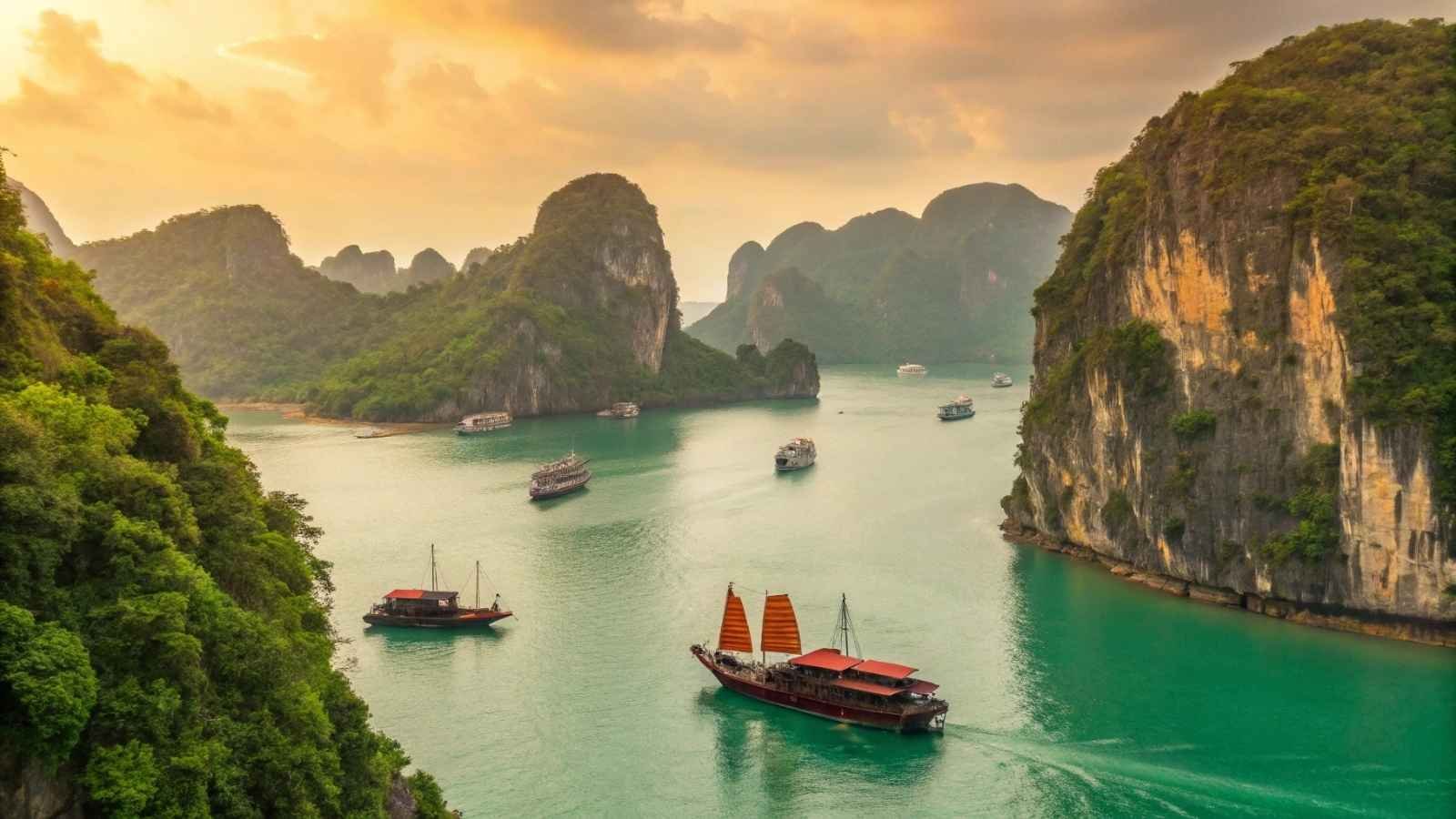
This one feels like a movie set. Imagine towering limestone karsts jutting out of emerald green waters, and tucked between them, floating fishing villages like Cua Van and Vung Vieng. These aren’t just tourist stops—they’re active communities, with children rowing to floating schools and fishermen bringing in the day’s catch.
What struck me most was how peaceful it all felt. Early morning in Cua Van, fog curling around the cliffs, a grandmother tossing rice to her chickens on a floating pen—it felt like time didn’t exist here. These villagers have developed a rhythm with the sea that most of us can’t even fathom.
Despite increasing tourism, the locals are working hard to protect their traditions. Many are now involved in sustainable tourism, inviting visitors to learn how to row a traditional bamboo boat or net fish like their ancestors.
Quick Facts:
- Best Months to Visit: October to April (cooler, dry weather)
- Nearby City: Ha Long or Hanoi (with a 3-hour drive)
- What to Try: Fresh squid, floating seafood restaurants
- Don’t Miss: Sunset kayak rides through the caves
- Travel Tip: Stay overnight on a traditional junk boat to soak it in
3. Inle Lake, Myanmar
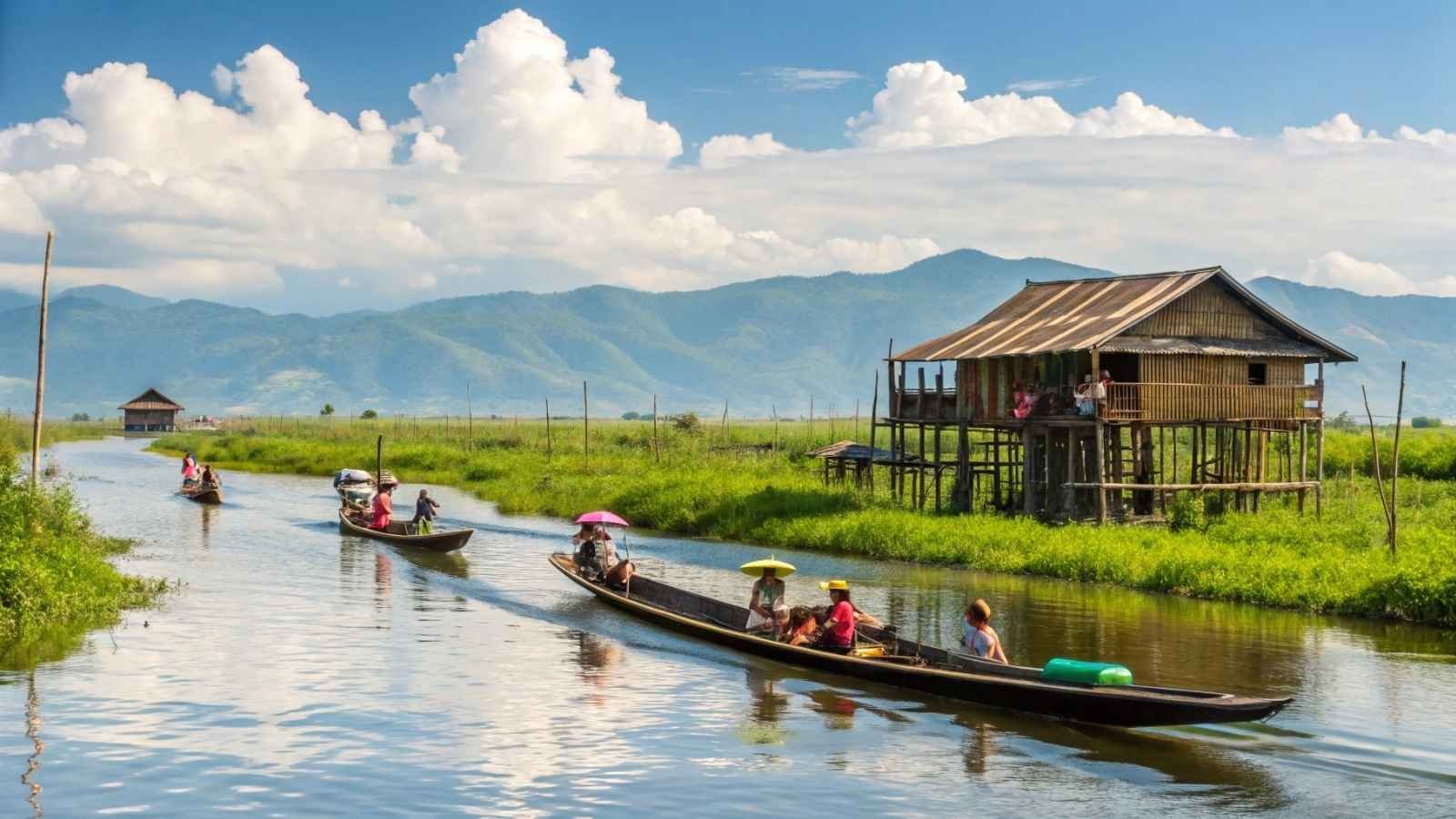
At first glance, Inle Lake seems like any other highland lake—but then you spot the floating gardens, entire tomato farms balanced on layers of water hyacinth and mud. Then come the Intha people, who row their canoes with a single leg—yes, standing on one leg and wrapping the other around the oar.
The floating villages here are marvels of innovation. Homes rest on teak stilts, connected by narrow canals. I stayed in a guesthouse run by a local couple, and at night, the only sound was water lapping beneath the bamboo floorboards. There’s a gentle magic to this place—a quiet, earthy way of life that feels like another world.
Beyond the spectacle, there’s soul. The locals are warm and deeply spiritual, with pagodas rising like mirages above the lake. The floating market, where boats come from all corners to sell produce and handicrafts, is a photographer’s dream.
Quick Facts:
- Best Months to Visit: November to February (cool and dry)
- Nearby City: Nyaungshwe or Heho Airport
- What to Try: Shan noodles, lake-grown tomatoes
- Don’t Miss: Morning leg-rowing fisherman displays (real ones, not touristy versions)
- Travel Tip: Take a slower, full-day boat tour—it’s the only way to truly see it all
4. Lake Titicaca, Peru/Bolivia

Lake Titicaca is already known as the highest navigable lake in the world, but the Uros floating islands take that to another level. Made entirely from totora reeds, these man-made islands have been hand-woven and rebuilt for hundreds of years. They float on layers of reeds and roots—and they feel like walking on a firm sponge.
Spending time with the Uros people feels like stepping into a myth. They show you how they build their islands, cook on open fires, and sail in dragon-shaped reed boats. One woman offered to braid my hair in the traditional style while her husband told stories about the lake’s guardian spirits.
There’s something surreal about sitting in a reed hut, eating trout caught that morning, and knowing that beneath you, the island is slowly drifting. This is living on water in its most literal form—and yet it works.
Quick Facts:
- Best Months to Visit: May to October (dry season)
- Nearby City: Puno (Peru) or Copacabana (Bolivia)
- What to Try: Grilled lake trout, quinoa soup
- Don’t Miss: A ride on a traditional reed boat
- Travel Tip: The air is thin—take time to acclimate before boating
5. Xochimilco, Mexico
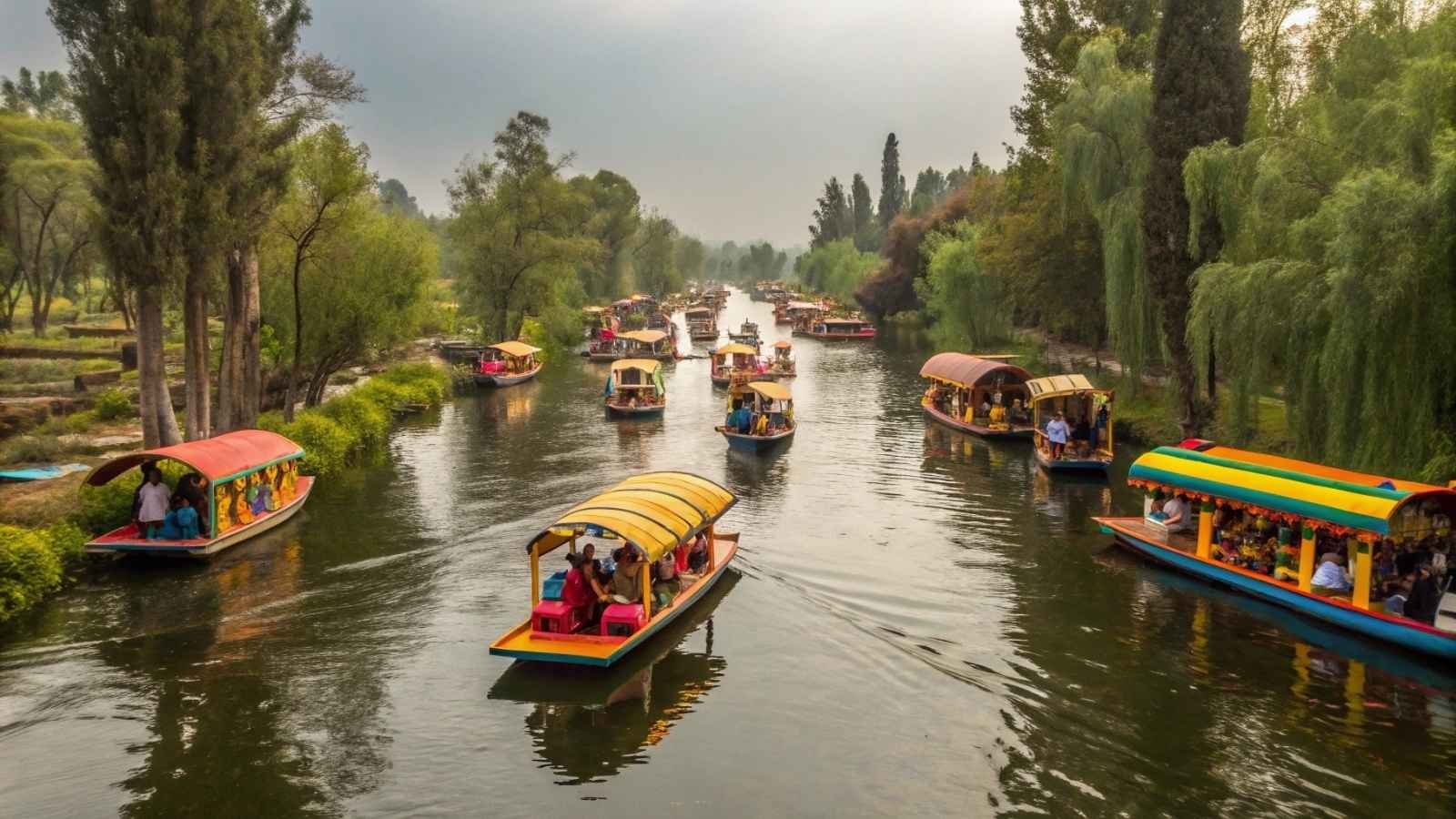
Floating villages don’t have to be rural to be remarkable. Just south of Mexico City, Xochimilco is a UNESCO World Heritage site, famed for its canals, colorful trajinera boats, and yes—its ancient chinampas or floating gardens. These date back to the Aztec era, when the indigenous people created fertile islands on lakebeds for agriculture.
These floating gardens are still in use, and if you go early—before the mariachi music and party boats take over—you’ll meet urban farmers who grow native plants and heirloom corn on these “floating” plots. It’s like a hidden world amid the sprawl of Mexico’s capital.
And yes, the boat rides are a riot of color and sound—but there’s also something deeply meaningful here. It’s a glimpse of how ancient ingenuity survives in a modern metropolis.
Quick Facts:
- Best Months to Visit: November to May (dry and cooler)
- Nearby City: Mexico City
- What to Try: Elotes (street corn), tamales sold on boats
- Don’t Miss: A morning tour of the ecological reserve, away from party crowds
- Travel Tip: Hire a trajinera early in the day for a calmer, more authentic vibe
6. Cao Bang, Vietnam
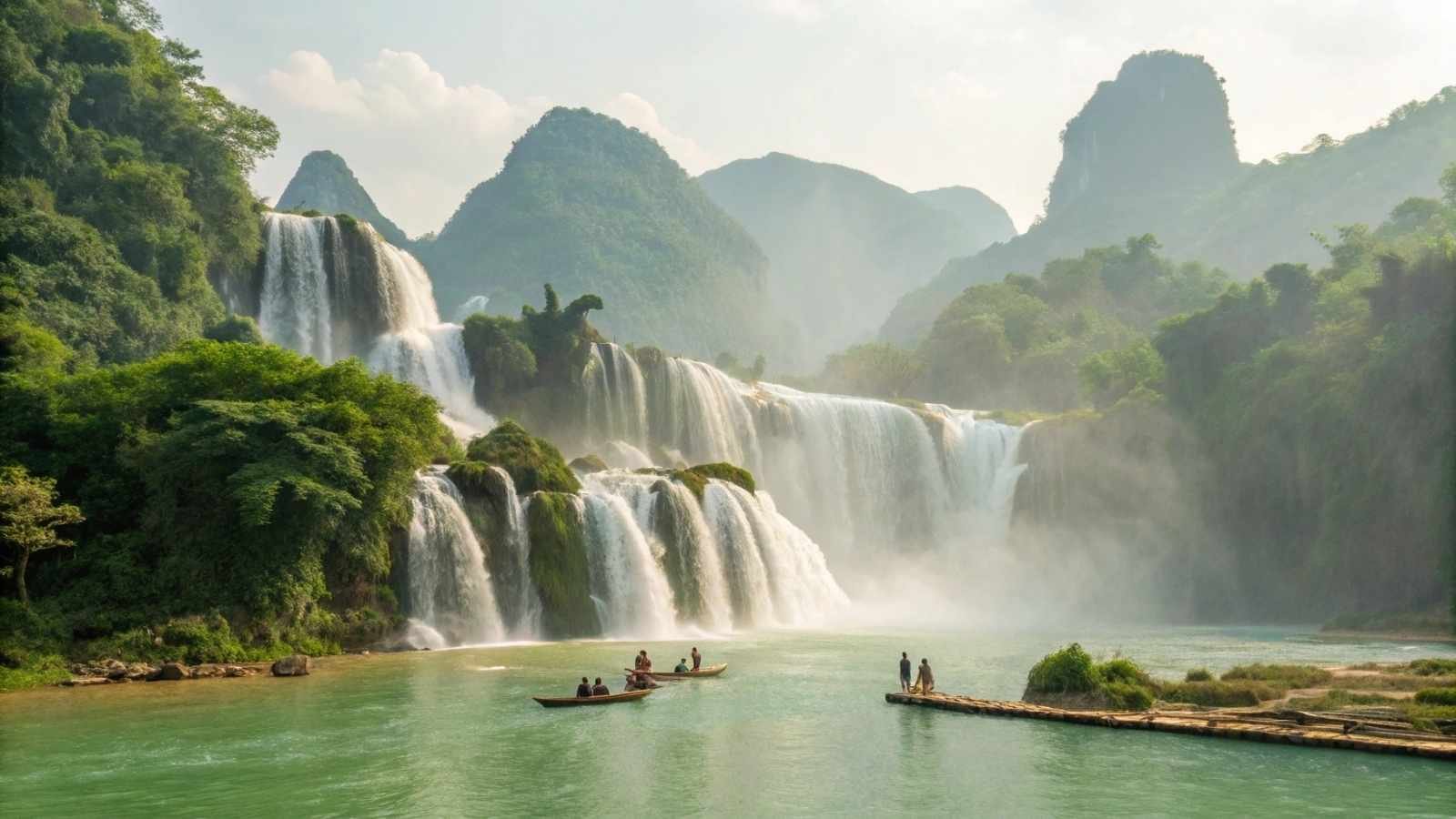
Cao Bang is like nature’s secret masterpiece, tucked away in northern Vietnam. While Halong Bay often steals the spotlight, Cao Bang offers something even more surreal. Imagine floating villages dotted around crystal-clear rivers, where locals live and work just as they have for centuries, weaving their way between towering cliffs and waterfalls.
What sets Cao Bang apart is its deep sense of tranquility. The rivers here are less trafficked, the scenery untouched, and the people seem to float in time. There’s something almost poetic about the way the bamboo huts line the water’s edge, especially as the sun sets and the mist from the mountains rises, cloaking the villages in mystery.
And if you’re a fan of natural beauty, you won’t want to miss the Ban Gioc Waterfall, a jaw-dropping cascade that straddles both Vietnam and China, located near the floating communities. Cao Bang’s uniqueness lies in its serenity and purity—perfect for those looking for a true escape into nature.
Quick Facts:
- Best Months to Visit: March to May (pleasant weather, fewer crowds)
- Nearby City: Hanoi (around 6 hours by car)
- What to Try: Local rice wine, grilled fish
- Don’t Miss: A boat ride around Ban Gioc Waterfall
- Travel Tip: Pack light and comfortable—this is a more rural area with limited tourist infrastructure
7. The Maldives (Floating Villas)

The Maldives doesn’t just boast stunning overwater bungalows—it redefines luxury in floating architecture. While many know the Maldives for its pristine beaches and clear lagoons, the floating villas take it to another level, offering exclusivity with stunning underwater views and direct access to the water right from your private deck.
There’s something surreal about waking up in a villa that’s floating above a coral reef, stepping off your porch directly into the turquoise sea. The Maldives is one of the best places on earth to experience luxury on water, where every moment feels like a dream. The ability to step outside and see colorful fish swimming beneath you, surrounded by nothing but water, is an experience I can’t easily forget.
While the Maldives’ floating villas often come at a steep price, they offer unparalleled privacy and comfort. Whether you’re a couple looking for a romantic getaway or a solo traveler seeking solitude, these floating paradises give you everything you need to feel completely immersed in nature’s beauty.
Quick Facts:
- Best Months to Visit: November to April (dry, sunny weather)
- Nearby City: Malé (international flights land here)
- What to Try: Coconut curry, freshly caught fish
- Don’t Miss: Underwater dining experiences and snorkeling with manta rays
- Travel Tip: Book well in advance for the best villa options
8. Maasai Mara, Kenya

Now, I know what you’re thinking—floating villages in Kenya? Well, Maasai Mara is not the traditional “floating village” you might imagine, but the Maasai people have adapted to living alongside water in an entirely different way. Their homes, or enkangs, are not on water but around it, and the community has developed ways of using the nearby rivers and lakes to support agriculture and fishing.
The real wonder here is the relationship between the Maasai people and the water that sustains them. In places like Lake Victoria, the Maasai use boats to travel between islands, maintaining age-old traditions and livelihoods. Watching the Maasai navigate their canoes through these waters, you begin to appreciate the deep-rooted understanding they have of the land and water systems, an understanding that allows them to thrive in one of Africa’s most stunning and challenging landscapes.
This is one of those places where you’ll witness not just physical beauty, but a remarkable cultural connection with the land and water that has shaped a community for centuries.
Quick Facts:
- Best Months to Visit: July to October (for the Great Migration)
- Nearby City: Nairobi (with a flight to Maasai Mara)
- What to Try: Ugali (maize porridge), grilled meats
- Don’t Miss: A canoe ride in Lake Victoria or a Maasai village visit
- Travel Tip: Respect Maasai customs, they are deeply tied to their land and water.
9. Lake Bunyonyi, Uganda

Lake Bunyonyi is one of those hidden gems that feels like a scene straight out of a fairy tale. Nestled between lush hills and dotted with 29 islands, this peaceful lake is often referred to as one of the safest and most beautiful bodies of water in Africa. The villages around the lake, built on stilts and floating platforms, have become a growing destination for eco-tourism.
While it may not have the bustling life of some of the other floating villages on this list, Lake Bunyonyi offers something equally compelling: tranquility and a chance to unplug. I spent hours just sitting on a boat, paddling through calm waters while the surrounding hills echoed with the calls of birds. These villages thrive by creating a symbiotic relationship with the lake, relying on fishing and farming for their livelihood.
Lake Bunyonyi is a must-visit for those who enjoy off-the-beaten-path adventures. Whether you choose to hike up the hills for a panoramic view or visit the traditional Batwa pygmy villages, there’s something deeply serene and untouched about this place.
Quick Facts:
- Best Months to Visit: June to September (dry season, perfect for hikes)
- Nearby City: Kabale (about 10 km away)
- What to Try: Fresh tilapia from the lake, sweet potatoes
- Don’t Miss: A boat tour to visit the islands, especially Punishment Island
- Travel Tip: Bring a light jacket—nights on the lake can get chilly


